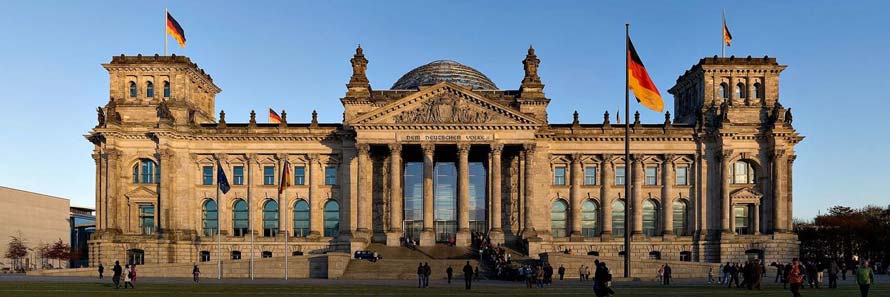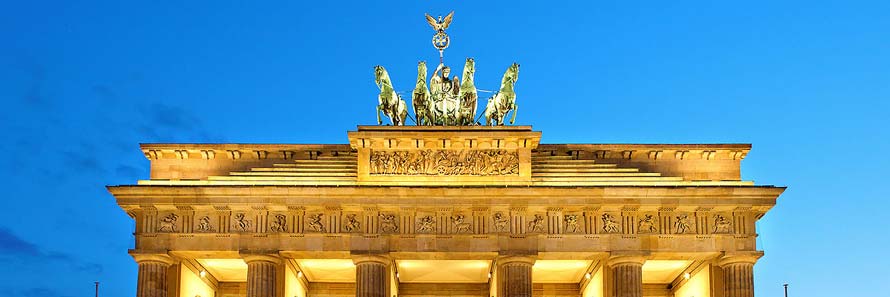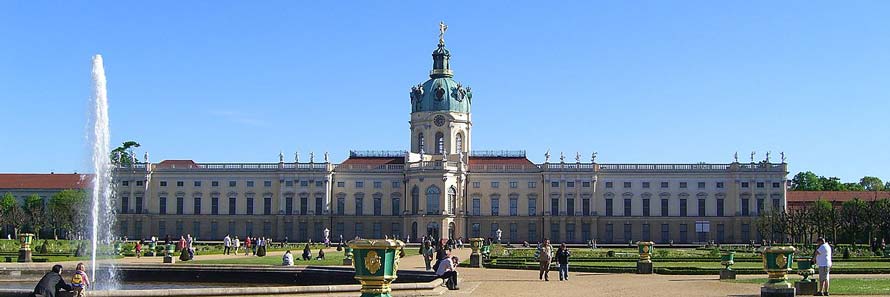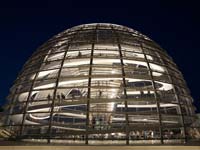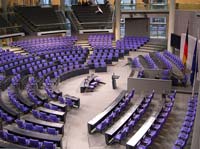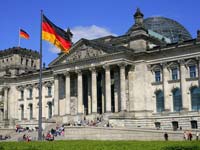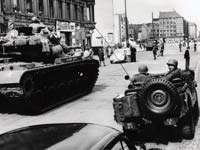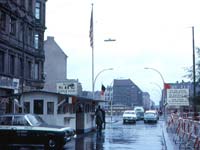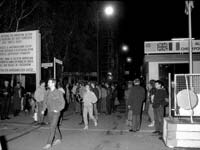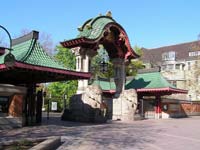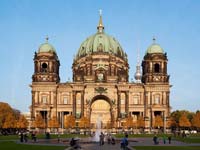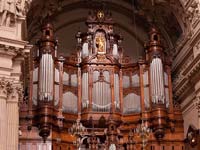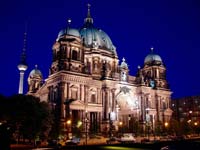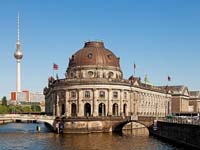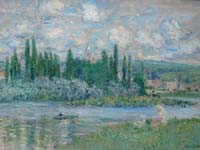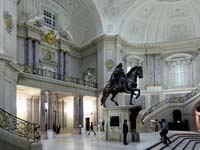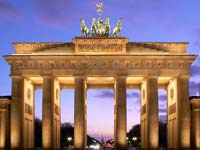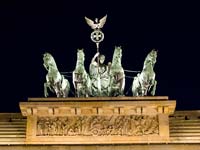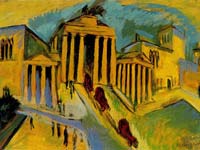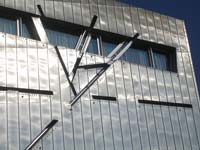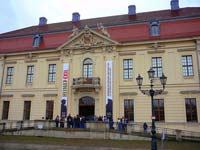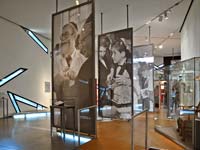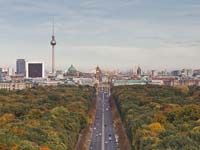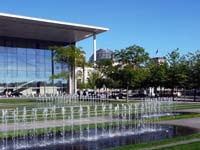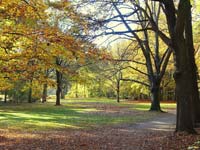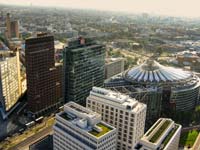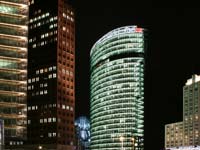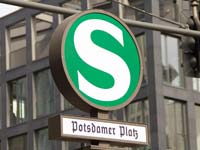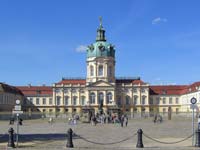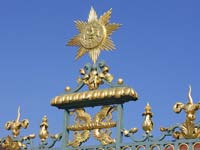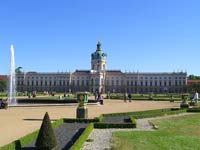Things to do in Berlin, GERMANY
Berlin, Germany's capital, is home to 3.6 million people and is one of the world's most historically significant cities.
Many of Berlin's top tourist attractions relate to the second world war and its aftermath. Checkpoint Charlie was the principal crossing point between east and west Berlin following the post-war division of the city and the construction of the Berlin Wall.
The modern Reichstag, with its gleaming glass dome, is an old building that was re-vampled to give hope and inspiration following reunification. And the Brandenburg Gate remembers Europe's tumultuous past and is a symbol of peace.
But Berlin is also a very pretty city. About one-third of its area is devoted to nature in the form of parks, forests, gardens, lakes and the rivers Spree and Havel. We recommend the 520-acre Tiergarten. Add in the mild climate and a host of world-class museums on Museum Island and you'll see why Berlin is a great all-round tourist destination.
1. The Reichstag
The Reichstag building was opened in 1894 and housed the German parliament until it was badly damaged by fire in 1933.
The building then fell into disuse, suffered very heavy damage during the second world war, and was surplus to requirements after the subsequent separation of Germany (with the East and West German governments meeting, respectively, in the Palace of the Republic in East Berlin and in Bonn).
The Reichstag was fully restored after the reunification of Germany in October 1990, following the design of the renowned British architect Sir Norman Foster. Of particular note is the Reichstag’s modern glass dome, rising to 47 metres in height, offering panoramic views of the Berlin cityscape.
Restoration was completed in 1999, with the Reichstag thereafter resuming its status as the home of the German parliament, the Bundestag.
Visitors can access the Reichstag's glass dome and roof terrace. But you must complete an online registration form, providing accurate names and dates of birth for all members of your party, in advance. (Though you can also register at Visitors' Services, near the Reichstag building, this is not recommended: there may be no free places and this will likely involve a 2+ hour wait.)
where? Platz der Republik 1, 11011 Berlin-Tiergarten, Tel: 227 32 152 Fax: 227 300 27. www.bundestag.de. Email besucherdienst@bundestag.de
when? Daily from 8 am to midnight (last entrance 10 pm). (The Dome is closed all day on 24 Dec, from 4pm on 31 Dec, and from 8 to 12 March, 26 to 30 July and 18 to 22 October.)
£$€¥ Free (though queues in the summer are lengthy).
2. Checkpoint Charlie
As is well-known, Germany was split following the conclusion of the second world war.
In the years that followed, there was massive emigration from east to west, which by 1961 had exceeded 3.1 million (or 20% of the population of East Germany). Such emigration was causing severe difficulties to the East German economy, with skilled workers especially prone to emigrating.
The East German authorities responded by erecting a barbed wire fence separating East and West Berlin on 13 August 1961. That was followed, within days, by work starting on the erection of a more permanent concrete structure.
The 'wall' would eventually be 830 miles long, frequently accompanied by a wide zonal border (aka 'death strip') on the East German side (often ploughed or mined to prevent escapes).
The principal point for crossing the wall in Berlin soon became known as Checkpoint Charlie. Active for 28 years, Checkpoint Charlie became a symbol of Germany's division and a favourite setting for spy films and books. It remained operational until the night of reunification, 9 November 1989.
The checkpoint is also infamous for being the place at which American and Russian tanks stood-off for days in late 1961 and being the point at which the teenage Peter Fechter was killed on 17 August 1962 while trying to cross the wall.
The checkpoint is today one of Berlin's principal tourist attractions, surrounded by exhibits giving information on the checkpoint's history and the Cold War more generally. Tourists can pay to have their picture taken with actors dressed as allied military policeman.
where? Friedrichstraße 43-45, 10969 Berlin-Kreuzberg. Nearest subway is U6 Kochstrasse/Checkpoint Charlie
when? All year round
£$€¥ Free.
3. Berlin Zoo
The Berlin Zoo is the largest zoo in Europe, attracting around 3 million visitors annually.
It is found in Berlin's Tiergarten, occupies an area of over 85 acres, and is home to over 15,000 animals from around 2,000 different species.
Amongst the zoo's inhabitants are lions, a giant panda called Bao Bao, Bactrian camels, Tuataras, giraffes, brown fur seals, red kangaroos, burrowing owls, colourful king vultures, southern ostriches, Asian elephants, African penguins, springbok and Knut the polar bear (who was raised by keepers on account of his mother rejecting him).
The large aquarium holds, amongst others, crocodiles, jellyfish, Komodo dragons and a blacktip reef shark in its 250 tanks.
where? Zoologischer Garten Berlin AG, Hardenbergplatz 8, 10787 Berlin, Tel. +49 (0) 30 254010. S-Bahn: S-Bahnhof Zoologischer Garten (S5, S7, S75, S9). U-Bahn: U-Bahnhof Zoologischer Garten (U2, U9), U-Bahnhof Kurfurstendamm (U1, U9)
when? 1 Jan - 20 Mar: 9am-5pm; 21 Mar-14 Sep: 9am-7pm; 15 Sep-25 Oct: 9am-6pm; 26 Oct-31 Dec: 9am-5pm; 24 Dec: 9am-2pm; 31 December: 9am-5pm
£$€¥ Adults: €12 (€18 for the zoo and aquarium); 5-15 year olds: €6 (€9 for the zoo and aquarium).
4. The Berlin Cathedral
Completed in 1905, the Berlin Cathedral is a large cathedral built on the site of the 1465 St Erasmus Chapel of the Royal Court.
Designed by Julius Raschdorff, the Berlin Cathedral (aka the Berliner Dom and the 'Protestant St Peters') is inspired by Baroque and Italian Renaissance design, and is a popular Berlin attraction.
The Cathedral is 114 metres long, 74 metres wide, and has a distinctive 70-metre tall Dome.
The Dome, reconstructed between 1975 and 1993 after being destroyed by an allied bombing raid in 1940, is decorated with eight 39 square metre mosaics depicting scenes from the Sermon on the Mount.
The Cathedral's interior—and in particular the Sauer organ (with its 7269 pipes), stained glass windows and neo-Gothic pulpit—is best viewed from the Dome's walkway, accessed by a wide 270-step staircase; the walkway also offers impressive views over Museum Island and of the Reichstag.
The Cathedral is also known for its Crypt, which contains the tombs of over 80 Prussian royals dating from the end of the 16th century (including that of Frederick I and his Queen, Sophie Charlotte).
where? Berliner Dom, Am Lustgarten, 10178 Berlin. T: +49(0)30- 20269-136. E: info@berlinerdom.de
when? 9am to 8pm (Mon to Sat); Noon to 8pm (Sun and Holidays); closes at 7pm from Oct to Mar.
£$€¥ Adults €5; Concessions €3 reductions; Free for Under-14s.
5. Museum Island
Museum Island (aka Museuminsel) is the name of the northern tip of an island in the Spree river in Central Berlin.
The Island, home to five of Berlin's most famous museums, was designated a UNESCO world heritage site in 1999.
Altes and Neues Museums
The Atles Museum (the Old Museum), housed in a stunning 87-metre wide neo-classical building, houses the he Antikensammlung (Collection of Classical Antiquities).
The Neues Museum (the New Museum), built on the orders of Frederick William IV in 1841, re-opened in 1999 after being restored following substantial damage in World War II.
It houses is the Egyptian Museum and Papyrus Collection, the Museum of Prehistory and Early History and various artefacts from the Collection of Classical Antiquities. Its most famous treasures include the Bust of Nefertiti and the Skull of the Neanderthal from Le Moustier.
Alte Nationalgalerie
The Alte Nationalgalerie (Old National Gallery) contains Classicism and Romanticism works (such as Friedrich's Mönch's am Meer), Impressionism masterpieces (such as Monet's St Germain l'Auxerrois and Manet's The House at Reuil), sculptures (such as Rodin's Man and his Thought) and works of early modern art (such as Max Liebermann's Orphan Girls in Amsterdam).
Bode Museum
The Bode Museum houses sculpture, Byzantine art, coins and medals; the Museum's most famous work is the controversial 'Flora' bust, with opinion still divided as to whether it is a work by da Vinci or a cheap 19th century knock-off.
Pergamon Museum
Last is the Pergamon Museum, which houses three museums under its roof:
- the Antiquity Museum holds art, sculpture, mosaics, pottery and jewellery from the Greek, Roman and Hellenistic ages, most famously the Pergamon Altar (a 371-foot sculptural frieze depicting the struggles of the Gods);
- the Islamic Art Museum contains art from the 8th to 19th centuries, as well as other treasures such as the Jordanian Mshatta facade and the Syrian Aleppo Room; and
- the Middle East Museum holds archaeological gems from Assyrian, Sumerian and Babylonian culture.
where? Museum Island.
when? Typically between 10 am and 6pm
£$€¥ Museums charge up to €8 (€4 for concessions) per person. It is better to buy an 'area' ticket (entitling you to access to all Museum Island's attractions, priced at €14 (€7 for concessions)).
6. Brandenburg Gate
Erected during the 18th century, the Brandenburg Gate is perhaps the most iconic symbol of Germany.
Commissioned by the Prussian King Frederick Wilhelm II, the Brandenburg Gate was completed in 1791. The gate is topped by the Quadriga, an imposing statue of the goddess of victory riding a chariot led by four horses.
For more than two hundred years of history, it has lived through many of the pivotal moments of the nation, and has come to be a symbol of both the division and the unification of Berlin.
The gate’s first real adventure started in 1806, when French soldiers stole the Quadriga and took it to France as a war trophy during the Napoleonic wars. The statue remained in France for eight years, until Prussian soldiers stormed Paris when Napoleon was defeated.
To mark this victory a silver cross was added to the monument. Since the gate was located in the desolate stretch of land that divided East and West Berlin, it came to signify the heart wrenching separation of the city. When the wall was finally toppled down, it became a symbol of unity, an honour it holds to this day.
where? The Brandenburg Gate is located in Pariser Platz. There are several stations that surround it, including the Brandenburger Tor U-Bahn Station. The gate is a short walk away from the Reichstag, so visitors often go visit one after the other.
when? The gate is open to the public and can be visited at any time of day. Of course, seeing it in the daytime is a different experience than seeing it lit at night, though both are equally impressive.
£$€¥ As the gate is a public monument located in open space, there is no price related to seeing it. Should you wish to buy a souvenir, you will find shops and merchants fairly close by, though prices tend to be slightly inflated in this area.
7. The Jewish Museum
One of the largest museums dedicated to Jewish history, it is a form of atonement for and remembrance of the city’s painful past.
The first museum dedicated to Jewish history in Germany was closed in 1938 by the Nazis after being open for only five years. It wasn’t until 2001 that a new Jewish museum was completed and opened in the German capital. One of the most visited museums in the country, the Jewish Museum is an iconic landmark, and one for which there was a great need.
The museum is separated into three buildings. The oldest used to be the Berlin Museum but was repurposed. The other two were designed by Daniel Libeskind in a deconstructivist-style.
Composed of a zig-zag with three intersection corridors that are slanted, the architecture of the museum purposefully conveys the pain and loss of Jewish history in Germany. The museum houses a large permanent collection that spans 2,000 years of history.
It also has special exhibitions, interactive galleries, and archives that hold records as well as personal stories from victims and survivors of the Holocaust.
where? The museum is located on Lindenstraße, a short walk away from the Berlinische Gallery. The closest bus stop is Jüdisches Museum, serviced by buses 248 and N42.
when? For public convenience, the museum is open every day. The schedule for Monday is 10am-10pm, and 10am-8pm for Tuesday through Sunday.
£$€¥ Price of admission is €8 for adults, and €14 for families of two adults and up to four children. Students with valid form of ID receive a reduced price of €3, and children under 6 years of age get in for free.
8. The Tiergarten
Berlin’s largest park, the Tiergarten, is a green space that carries a heavy history on its back.
Gardens, especially urban ones, don’t tend to be much more than very pleasant spaces where city dwellers can enjoy a bit of green. The Tiergarten, however, is much more than that. This 520 acre park is the third largest urban garden in Germany, and was initially built during the 16th century as a hunting ground for the Prussian King.
For decades, the court would enjoy the forest on their hunting trips, which were restrained from being overly exertive by the walls that kept wild animals inside the grounds. As the city of Berlin expanded, the garden was shrunk to accommodate the booming population.
During the terrorizing reign of the Nazis, the Tiergarten suffered a great loss of its natural and manmade charm. Statues and monuments were destroyed, torn down, and heavily damaged. Thousands of trees were cut down, ponds were polluted, and bridges burnt.
Today, the garden has regained its pleasant appeal. It is a very popular spot for families and people of all ages, especially on sunny days and Sundays. When it’s warm, you can see people picnicking, sunbathing, and playing sports. It also houses the Berlin Zoo, playgrounds, English gardens, and more.
where? The Tiergarten is located in the city centre, surrounded by important monuments like the Reichstag and the Brandenburg Gate. Given its expansive land, there are several points of entry, depending on where you are coming from and where you want to go. If at a loss of where to begin, head to the Tiergarten S-Bahn or the Brandenburger Tor U-Bahn stations.
when? The park is open 24 hours a day, every single day of the year. Specific attractions within the park such as the zoo, the Bird House, and the Aquarium-Terrarium House have their own hours, so please check and plan according to your interests.
£$€¥ Entrance to the park is, of course, free of charge. You can enjoy the park without spending any money at all. However, keep in mind that many of the park’s activities like the cafes, the zoo, and the aquarium can be relatively expensive.
9. Potsdamer Platz
A true story of resurrection, Potsdamer Platz is the face of modern Berlin.
A sort of Hollywood Boulevard or Champs Elysees, Potsdamer Platz is a central square in the German capital that exudes modernity and innovation in its every breath.
It was Berlin’s main plaza before World War II destroyed it and the Cold War tore it apart with the divisive wall. It remained in desolation until the fall of the Berlin wall and the unification of the country in the 1990s.
Given the opportunity for a new life, Potsdamer Platz came back with a vengeance. Companies like Sony moved their headquarters here, galleries and theaters opened around, and hundreds of people are now transitioning through it in search for the entertainment and appeal that modern Berlin offers.
where? The Potsdamer Platz is located in the city centre, right next to the Brandenburg Gate, the Reichstag, and Tiergarten. It is easily accessible from the Berlin Potsdamer Platz Bahnhof S-Bahn station and the U2 U-Bahn line.
when? When to visit Potsdamer Platz depends mainly on your individual interests. If you want to simply walk around, then you can enjoy it at any time, though of course night offers some particularly good opportunities for entertainment and dining. If you wish to visit a specific gallery or enjoy other attractions like LEGOLAND Discovery Centre, then you will have to check the opening times.
£$€¥ In itself, visiting the Platz is free of charge. However, there is no shortage of opportunities to treat yourself if you so wish to. This means that travelers on a budget can enjoy it with minimal spending, while those who want to splurge a little can find an ample array of shops, restaurants, and entertainment—those with no spending limit can even gamble away at the casino!
10. Charlottenburg Palace
The largest palace in Berlin, it is a vestige to the imperial past of the German capital.
No one who visits the magnificent Charlottenburg Palace today would guess that it was first intended as a summer residence for the royal family. Thankfully for modern visitors, Frederick the Great took it upon himself to remodel and expand the palace during the 18th century.
The palace is a grandiose reminder of the great power that the Hohenzollerns wielded in the region for centuries. Its style is Baroque and Rococo, leaving no place for dullness in even the smallest of details. The opulence of the palace, grounds, and pavilions is truly breathtaking.
Though there is no uninteresting place in the palace, some of its highlights include the chambers of former rulers like the aforementioned Frederick the Great, as well as that of Friedrich I.
The White Hall banquet room, the Porcelain Chamber, and the beautifully curated and perfectly kept grounds are also favorites with locals and tourists alike.
where? The palace is located on Spandauer Damm 10-22. You can access it on the Luisenplatz/Schloss Charlottenburg station, which is serviced by buses 109 and M45.
when? Charlottenburg Palace opens from Tuesday through Sunday. Opening times are from 10am-5pm from November to March, and 10am-6pm from April to October.
£$€¥ Each building charges a separate admission fee, but the daily pass allows admission to all four buildings for the very reasonable price of €12 for regular tickets, and €9 for concessions.
